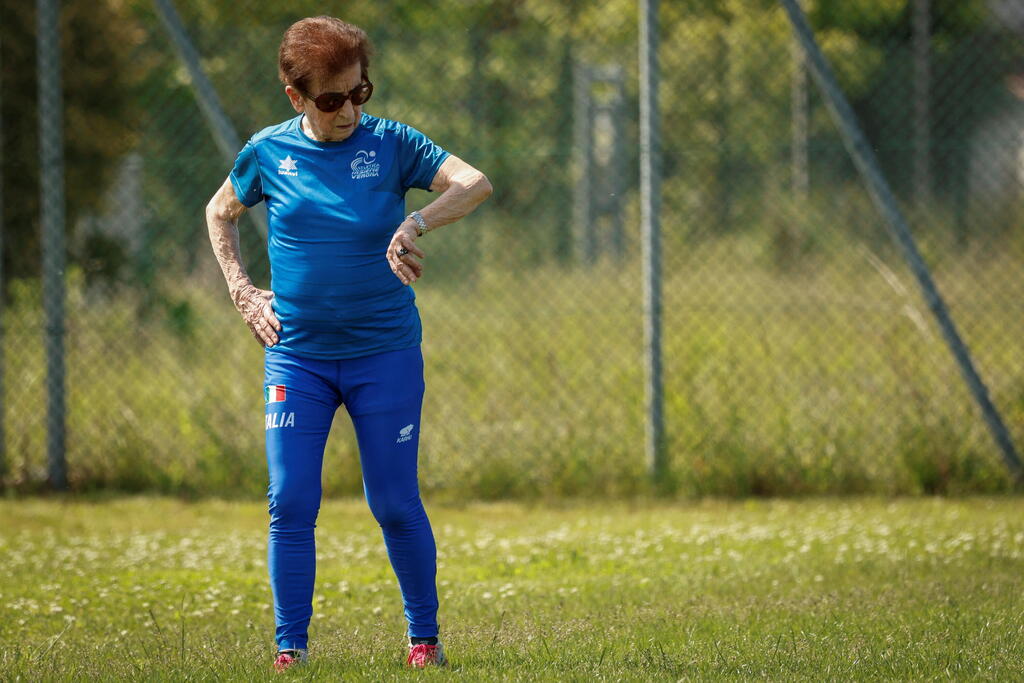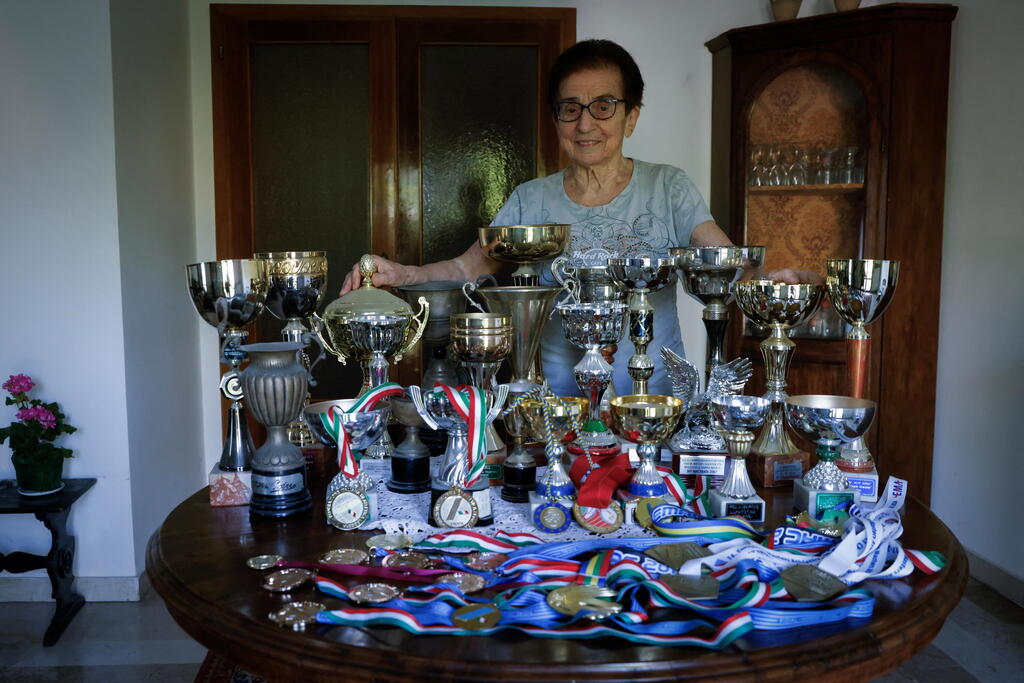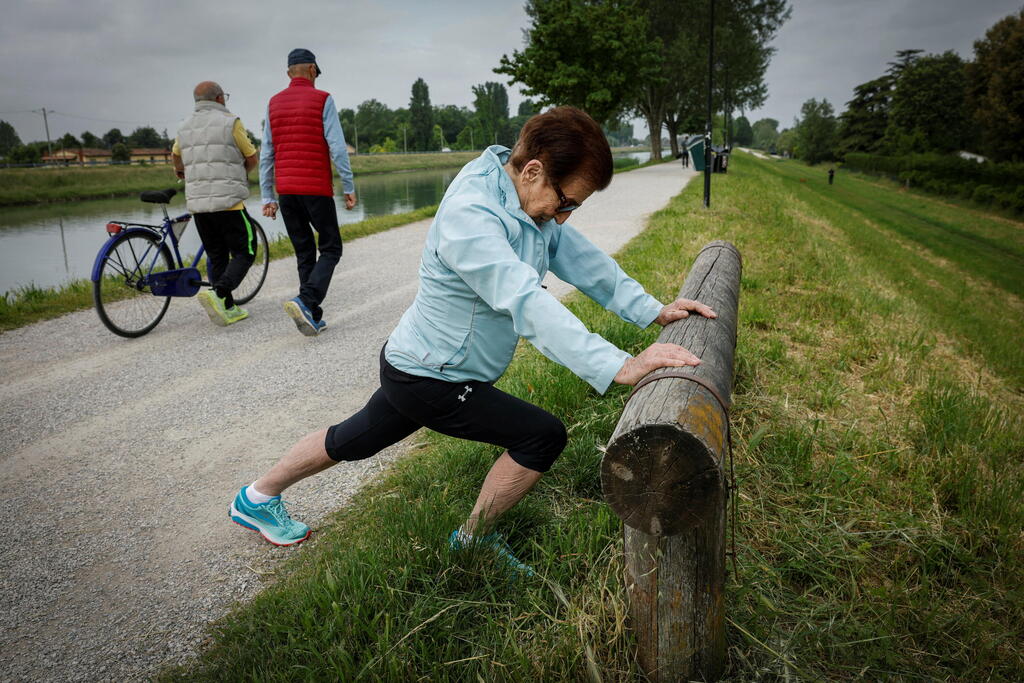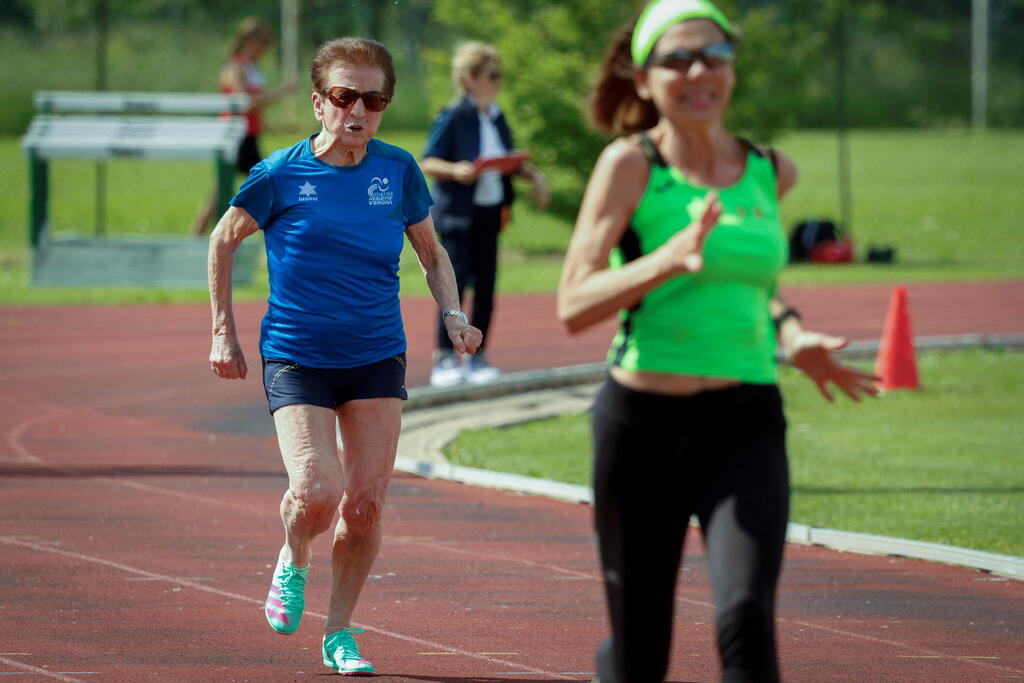At an age when most people settle for a short trip to the supermarket or a slow walk in the park, there’s one woman who continues to surprise the world – and run. She’s 92, a veteran sprinter from Italy who holds not only four world records in her age group, but also nine European records and 28 official records in her country. This is the story of Emma Maria Mazzenga, who has become a fascinating mystery for scientists.
She stands just 1.55 meters tall, but is defined as an elite sprinter who holds four world records for her age – and barely has anyone to compete against. In Italy, she has no competitors her age, and even at world championships, it’s usually a race between her and a single other athlete. Still, she breaks records. Just last year, she improved the world record in the 200-meter run for women over 90 twice within a month – and dominated the charts. That was her big breakthrough. “Suddenly I found myself in the newspapers – something that had never happened before,” she said.
Meanwhile, Mazzenga’s achievements didn’t stay only on the track – and began to intrigue scientists from Italy and the United States who tried to crack the simple question: How does a woman this age manage to perform physical activities and maintain energy, fitness and endurance at the level of women decades younger?
“When we examine high-level older athletes, we can better understand what the body is capable of even at an advanced age,” explained Chris Sundberg, one of the leading researchers. Mazzenga, who was a high school science teacher and is retired but still reads scientific journals, agreed to participate in the research. Last year, researcher Simone Porcelli invited her for a full day of tests at the University of Pavia.
In the laboratory, a muscle sample was taken from Mazzenga’s thigh that led to extraordinary findings. In the lab, under the microscope, a fascinating combination was revealed in Mazzenga’s body: the fast-twitch muscle fibers resembled those of a healthy person in their 70s. The slow-twitch muscle fibers, related to endurance, looked like those of a 20-year-old. Additionally, blood flow and neural pathways that activate muscles maintained excellent function, and the mitochondria – those “small engines” in cells that produce energy – were found to be well-preserved. Fitness tests revealed she enjoys the cardiovascular fitness of a woman in her 50s and can perform activities that her peers have long struggled with. “It’s rare to find someone with such data,” said one researcher, “and it’s probably a combination of genetics, lifestyle and motivation that never ends.”
“Through genetics, lifestyle, or a combination of both – she manages to maintain communication between the brain, nerves and muscles at a much higher level than what we see in 90-year-olds,” explained researcher Chris Sundberg. According to him, the parts of muscles that are still in excellent condition almost manage to compensate for those that have weakened over the years. “We’re still far from finishing the research,” Sundberg added. “We have quite a few more experiments to understand the full picture.”
“Thanks to a combination of genetics and lifestyle – or perhaps both together – she manages to maintain an exceptionally efficient connection between the brain, nerves and muscles, far beyond what we usually see in 90-year-olds,” he explains. According to him, the parts of muscles that are still in excellent condition almost manage to compensate for those that have weakened over the years.
“Can’t just sit and wait for the day to end, need movement”
So what’s Mazzenga’s secret? Motivation indeed plays a central role, but so does the nature of training and, of course, nutrition. Her menu includes steak, fish, fried eggs, some pasta or rice. No sophisticated diets or extreme rules – except complete avoidance of food in the three hours before running.
She trains two to three times a week at the stadium or by the river, and on other days settles for walking. She says her workouts last about an hour and include slow warm-up, short runs, and then repetitions of the distance she competes in – with rest periods between them. Her advice to other seniors is simple: “First, know your limits, consult with a doctor, and then be consistent. Run several times a week – and don’t give up. Sport has given me so much, it really saved me. I can’t just sit and wait for the day to end. I need movement.”
Researchers see Mazzenga as a rare example of how one can age healthily and emphasize the persistence she talks about. “Many of the damages that come with age can be reduced if you maintain regular physical activity,” one of them explained.
Bas van Hooren, a researcher from Maastricht University in the Netherlands, noted that “many of the negative effects of aging are significantly reduced if you keep moving. The good news is it’s never too late to start.” According to him, even the runners he studied who began training only in middle age managed to make changes that affected both body and mind.
Luigi Ferrucci, from the National Institute on Aging in the United States, explained that “you need a comprehensive approach that includes proper nutrition, positive thinking, and of course physical activity. Sport is an excellent foundation – but you need to treat the whole body, not just part of it.”
Beyond achievements on the track and the scientific interest she generates, Mazzenga says she also maintains small rituals that have accompanied her over the years – souvenirs from every competition, a regular lucky shirt and sometimes a beer after victory.
These days, Mazzenga is training for competitions in the 100 and 200 meters, which will take place in September in Catania, Sicily, as part of Masters events for older ages. Right after the competition, she plans to return to the University of Pavia for another series of tests, and in November to open the winter training season indoors. “The secret is never to stop. I live day by day, and meanwhile enjoy every moment,” she says, adding modestly: “I make plans only a month ahead, no further than that.”
Source link





